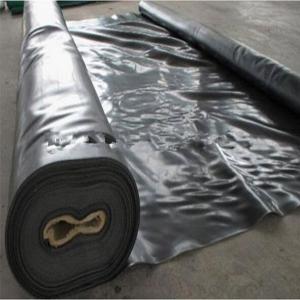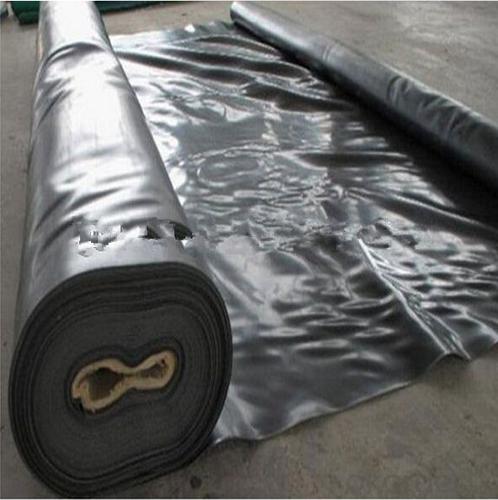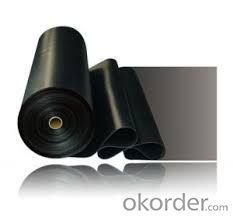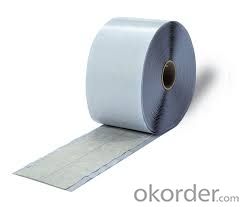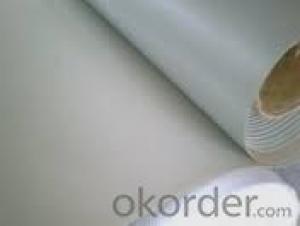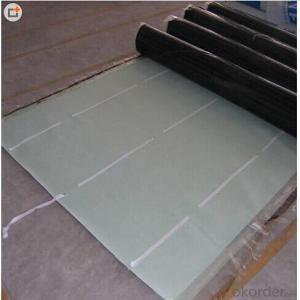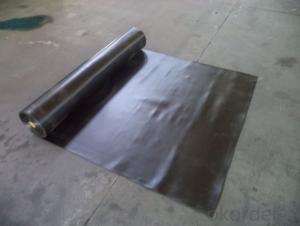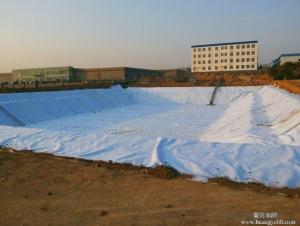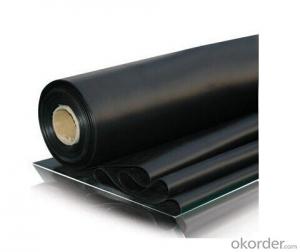1.0mm 1.5mm 1.8mm 2.0mm EPDM Waterproof Membrane For Your Reference
- Loading Port:
- Shanghai
- Payment Terms:
- TT OR LC
- Min Order Qty:
- 1000 m²
- Supply Capability:
- 200000 m²/month
OKorder Service Pledge
OKorder Financial Service
You Might Also Like
Product description
EPDM is a world-recognised popular waterproofing material in the recent thirty years. Hongyuan adopts the world−advanced equipment of cold feeding extrusion and continuous vulcanization technology. With the best performance among high polymer waterproof materials, EPDM is of exceptional elasticity and will not split or crack under normal building movement.
Application Scope
Waterproofing, anti-seepage and moisture proof of side walls of basements, baseboards, head plates and roofs.
Advantagee
1.Excellent anti aging performance ,service life up to 50 years.
2.High extension rate,high tensile strength ,small size changes at heat treatment.
3.Good plant roots penetrability resistance and can be made waterproofing layer of planting roof.
4.Special modified molecular structure ,effectively resolving the current domestic and foreign glue joint problem.
5.Good low temperature flexibility ,and good performance of adapting to ambient temperature changes.
6.Convenient application ,solid joint ,no environment pollution.
7.Chemical corrosion resistance ,can be used for special occasions.
8.Good anti-perforated.
Storage:
Different types or specifications of products should be separated, not mixed.
Keep it dry and ventilated, protected from the sun or rain.
Storage temperature should never be higher than 45 °C. Pile up the membranes flatwise whose stockpile height never exceeds five layers. One layer is guaranteed if it is placed vertically.
Prevent it from inclination or In the process of transportation, it should be lying in case of inclination or lateral pressure. If necessary, cover it with felt-cloth.
Storage time is at least one year from manufacture date on if the product is under normal operation of storage.
Technical Parameters
Item | Index | ||||||
1 | Thickness of resin layer of the middle fabric ,mm≥ | - | - | 0.40 | 0.40 | 0.40 | |
2 | Tensile performance | Max tensile strength,N/cm ≥ | - | 120 | 250 | - | 120 |
Tensile strength,NPa ≥ | 10 | - | -10 | - | - | ||
Max elongation% ≥ | - | - | 15 | - | - | ||
Breaking elongation % ≥ | 200 | 150 | - | 200 | 100 | ||
3 | Heat treatment size change rate%≤ | 2.0 | 1.0 | 0.5 | 0.1 | 0.1 | |
4 | Cold bonding | -25°c No cracks | |||||
5 | Watertightness | 0.3mPa,2h waterproof | |||||
product show
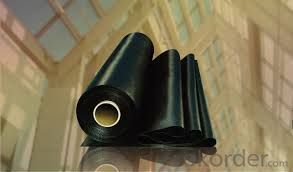
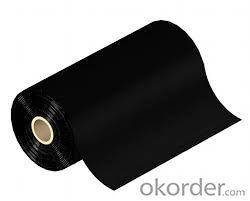
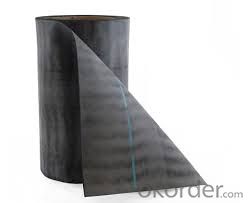
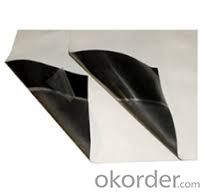




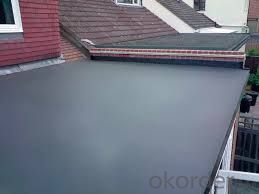
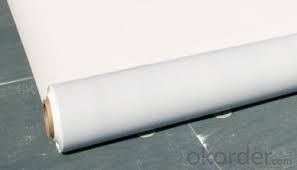
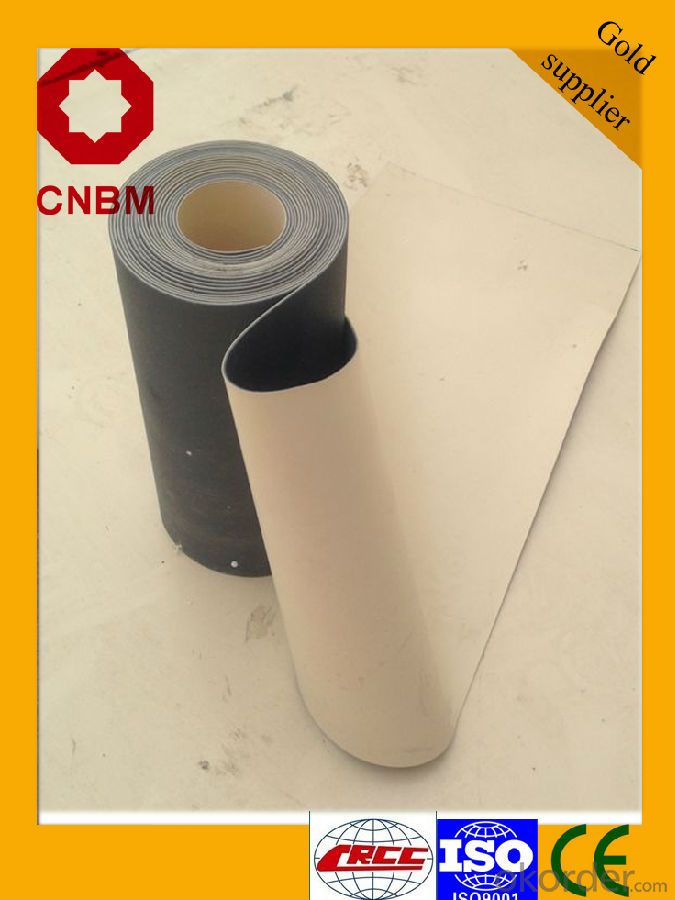
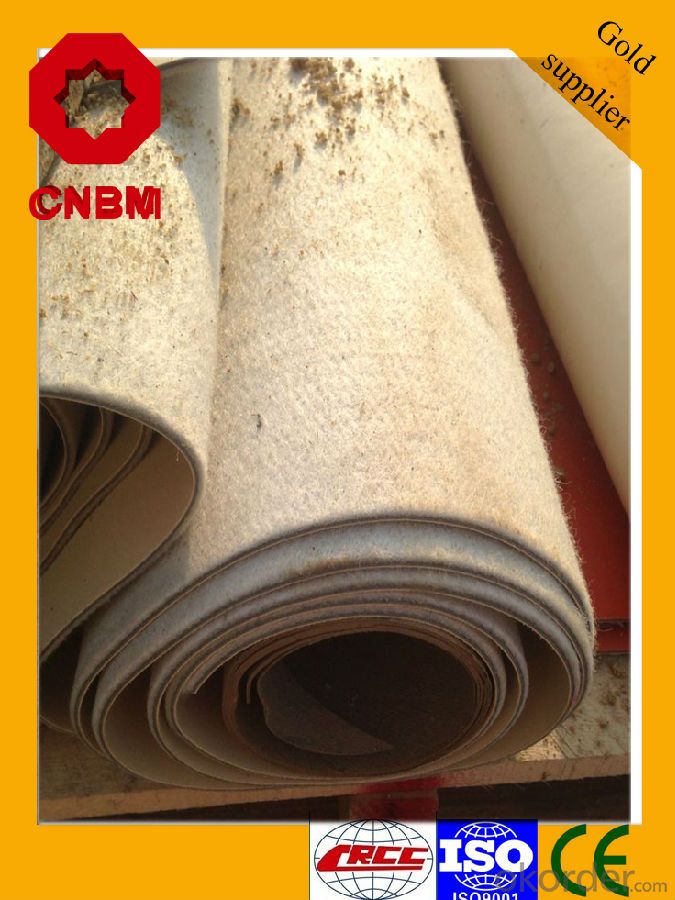
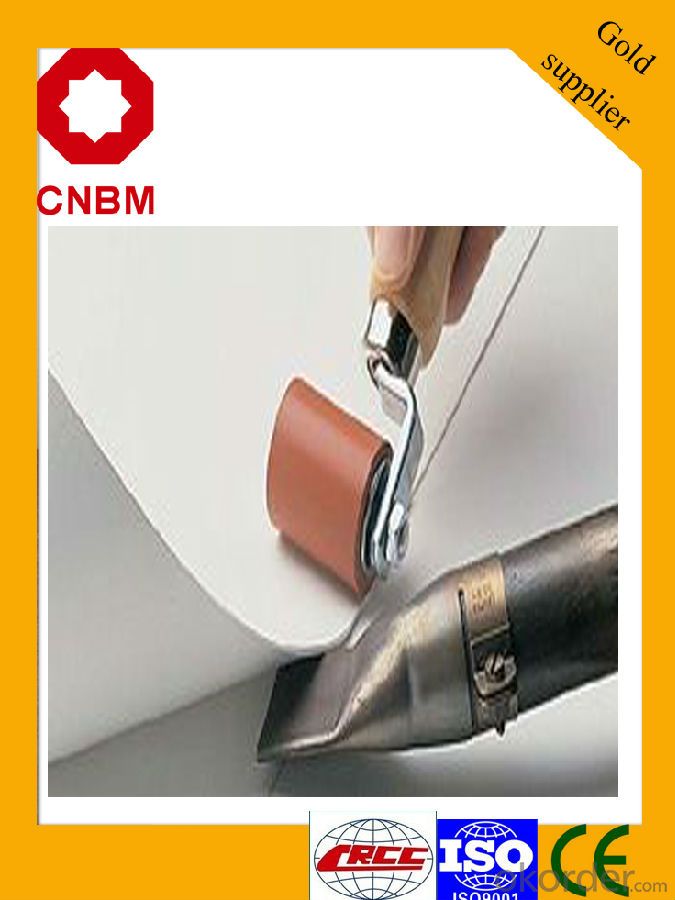

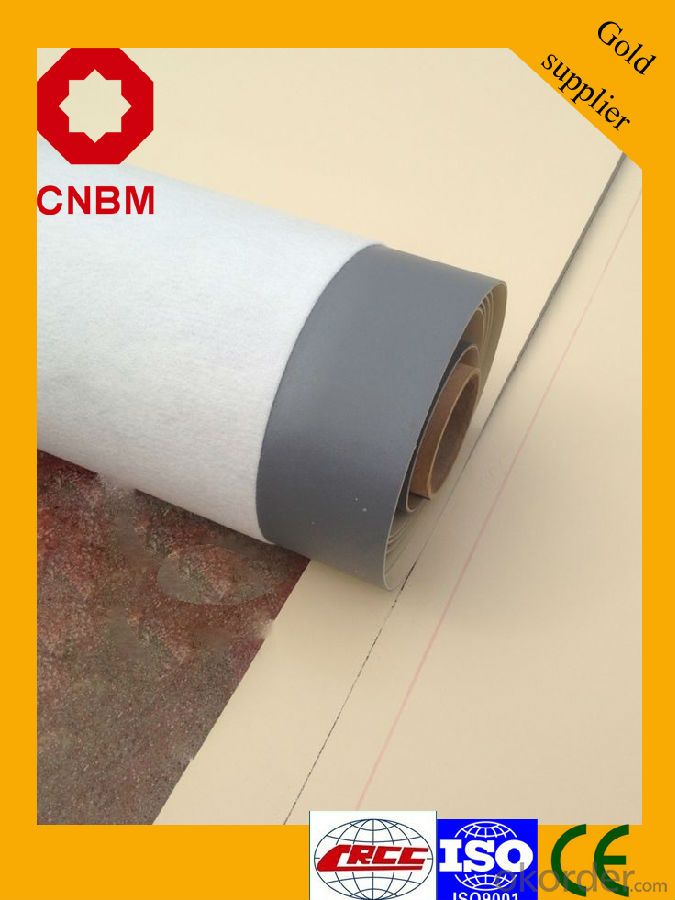
FAQ
Q: What's the de6abf1fe186f8d58506cbcfe46eed814d.jpglivery time ?
A: 3-5 days for 1-600 rolls, 10-15 days for container.
Q: What's the payment terms ?
A: TT/LC
Q: How do you make replacement with quality problems ?
A: New replacement will be packed into your next order or send to you directly after receive video or photo about quality problems.
- Q: Can a waterproofing membrane be used in conjunction with a drainage system?
- Yes, a waterproofing membrane can be used in conjunction with a drainage system. In fact, it is often recommended to use both together for effective waterproofing and drainage in areas such as basements, roofs, and foundations. The waterproofing membrane acts as a barrier to prevent water from seeping through the surface, while the drainage system helps to remove any excess water that may accumulate. By combining these two systems, it ensures a comprehensive solution to protect the structure from potential water damage.
- Q: Are waterproofing membranes resistant to thermal cycling?
- Yes, waterproofing membranes are generally resistant to thermal cycling. These membranes are designed to handle the expansion and contraction that occurs due to temperature fluctuations, making them ideal for protecting structures from water damage caused by thermal stress.
- Q: Can a waterproofing membrane be used for an industrial facility?
- Yes, a waterproofing membrane can be used for an industrial facility. A waterproofing membrane is a protective layer that is applied to surfaces to prevent water penetration and moisture damage. Industrial facilities, such as manufacturing plants, warehouses, and processing plants, often require effective waterproofing to protect their structures, equipment, and inventory from water damage. Industrial facilities are often exposed to various sources of water, such as rain, leaks, or spills. These facilities may also have high humidity levels or water-intensive processes. Waterproofing membranes can provide a reliable barrier against water intrusion, helping to prevent damage and corrosion to the facility's structure, machinery, and products. Waterproofing membranes are designed to be durable and long-lasting, capable of withstanding harsh industrial conditions and high levels of traffic or heavy equipment. They are available in different materials, such as bitumen, PVC, EPDM, or polyurethane, allowing for flexibility in choosing the most suitable membrane for specific industrial applications. Furthermore, waterproofing membranes can also offer additional benefits beyond water resistance. Some membranes provide insulation properties, helping to regulate temperature and reduce energy consumption. They can also improve the overall safety and hygiene of an industrial facility by preventing the growth of mold, mildew, or bacteria that thrive in damp environments. In conclusion, a waterproofing membrane can be a highly effective solution for protecting an industrial facility from water damage. It provides a reliable barrier against water intrusion, ensuring the longevity and functionality of the facility, as well as protecting valuable assets within it.
- Q: Can a waterproofing membrane be used for a garden pond?
- Indeed, a garden pond can benefit from the use of a waterproofing membrane. Specifically designed to prevent water seepage, this membrane offers an excellent solution for creating a watertight seal in the pond. By lining the pond with this material, one can effectively prevent water leakage and maintain the desired water level. Moreover, the use of a waterproofing membrane also serves to safeguard the pond liner against potential damage from roots, rocks, or other sharp objects, thereby extending the pond's lifespan. However, it is crucial to ensure that the chosen waterproofing membrane is completely safe for aquatic life and does not contain any harmful chemicals that may contaminate the pond water and adversely affect the plants and fish.
- Q: Can a waterproofing membrane be used on both residential and commercial buildings?
- Certainly, both residential and commercial buildings can benefit from the application of a waterproofing membrane. These membranes are specially crafted to create a shield against water infiltration, making them indispensable for any structure, whether it be a home or a business establishment. Be it a dwelling, a multi-unit complex, a corporate office, or a retail store, the versatile waterproofing membrane can be effortlessly applied to a variety of surfaces, including roofs, walls, foundations, and basements, effectively safeguarding the building from the perils of water damage and seepage. Furthermore, these membranes come in a wide array of types and materials, ensuring that they can be tailored to meet the specific needs and demands of any building, regardless of its residential or commercial nature.
- Q: Can a waterproofing membrane be used in hot climates?
- Certainly, hot climates are indeed suitable for the utilization of a waterproofing membrane. In fact, it is imperative to employ a waterproofing membrane in regions characterized by elevated temperatures and strong sunlight. The purpose of this membrane is to safeguard against water infiltration, which is of utmost importance in order to avert any harm to structures such as roofs, balconies, or basements. Furthermore, a top-notch waterproofing membrane is specifically engineered to endure the impacts of temperature fluctuations and UV radiation, guaranteeing its long-lastingness and efficacy even amidst scorching climates. Consequently, it is highly recommended to employ a waterproofing membrane in hot climates to ensure the resilience and integrity of the structures to which it is applied.
- Q: What is the cost of a waterproofing membrane?
- The cost of a waterproofing membrane can vary depending on factors such as the type and quality of the membrane, the size of the area to be covered, and the complexity of the installation. It is best to consult with manufacturers or contractors to get accurate cost estimates for specific projects.
- Q: Are waterproofing membranes resistant to salt damage?
- Yes, waterproofing membranes are generally resistant to salt damage. They are designed to protect against moisture and other environmental factors, including saltwater. The membranes are specifically engineered to provide a barrier that prevents water and salts from infiltrating and causing damage to underlying structures.
- Q: Can a waterproofing membrane withstand heavy rain or water pressure?
- A waterproofing membrane is specifically designed to endure heavy rain or water pressure. Its main purpose is to establish a barrier that obstructs water from infiltrating a structure or surface. Generally, these membranes are composed of materials like rubberized asphalt, PVC, or EPDM (ethylene propylene diene monomer), which possess a remarkable resistance against water and can effectively endure heavy rain or water pressure. Furthermore, these membranes are frequently fortified with layers or fabrics to offer additional strength and durability. Consequently, when accurately installed and regularly maintained, a waterproofing membrane can effectively endure heavy rain or water pressure, ensuring dependable protection against water damage.
- Q: How does a waterproofing membrane handle settlement cracks?
- A waterproofing membrane is designed to handle settlement cracks by providing a flexible and seamless barrier over the surface. This membrane can stretch and move with the structure, preventing water from entering through the cracks and causing damage.
Send your message to us
1.0mm 1.5mm 1.8mm 2.0mm EPDM Waterproof Membrane For Your Reference
- Loading Port:
- Shanghai
- Payment Terms:
- TT OR LC
- Min Order Qty:
- 1000 m²
- Supply Capability:
- 200000 m²/month
OKorder Service Pledge
OKorder Financial Service
Similar products
Hot products
Hot Searches
Related keywords
